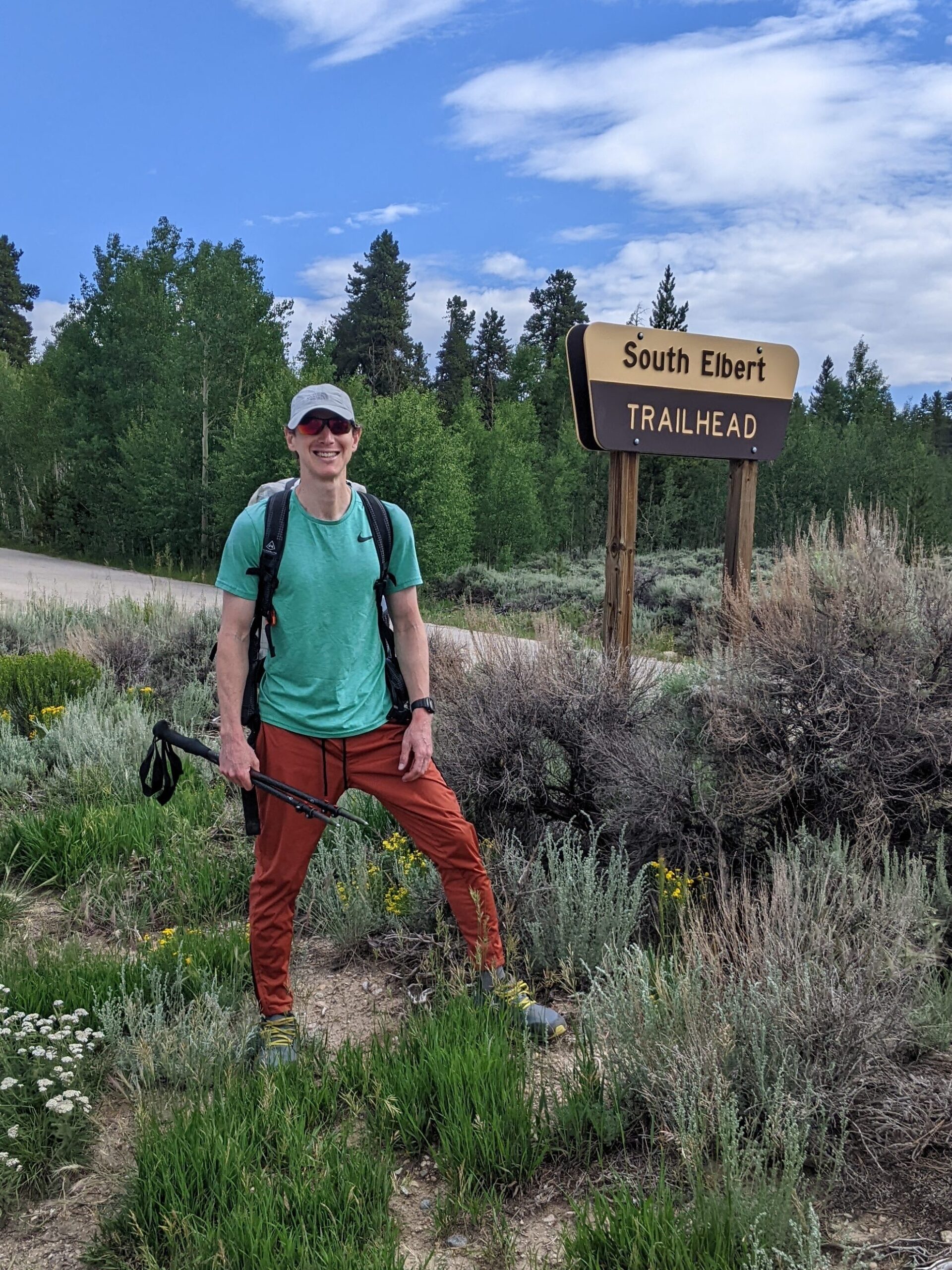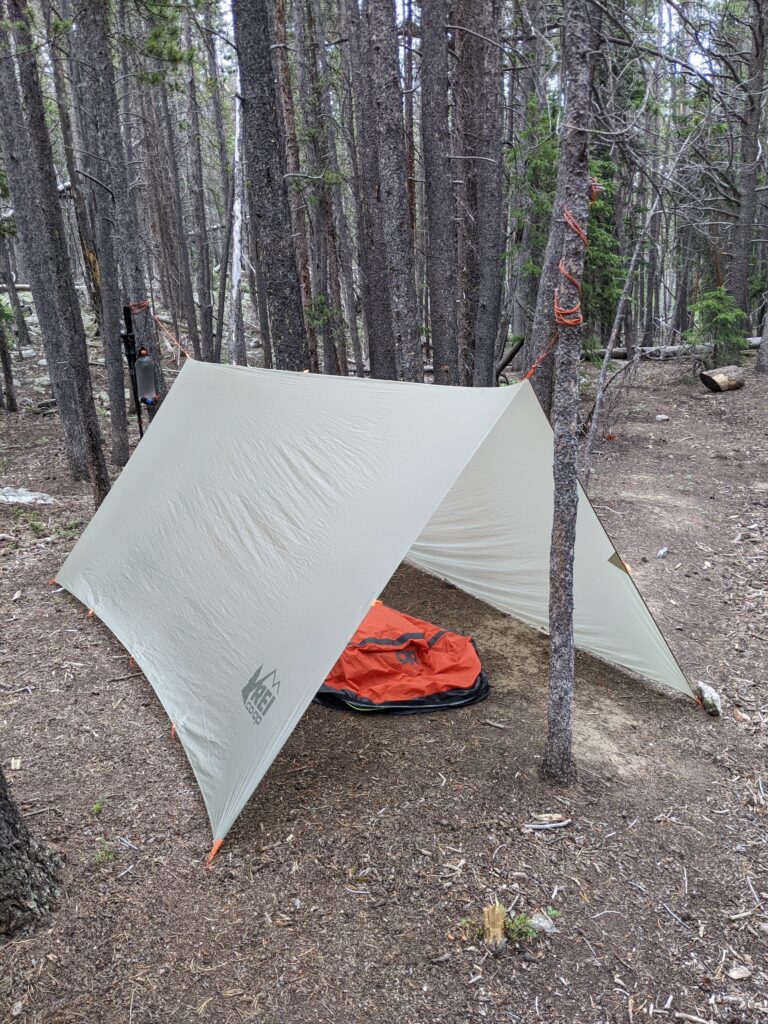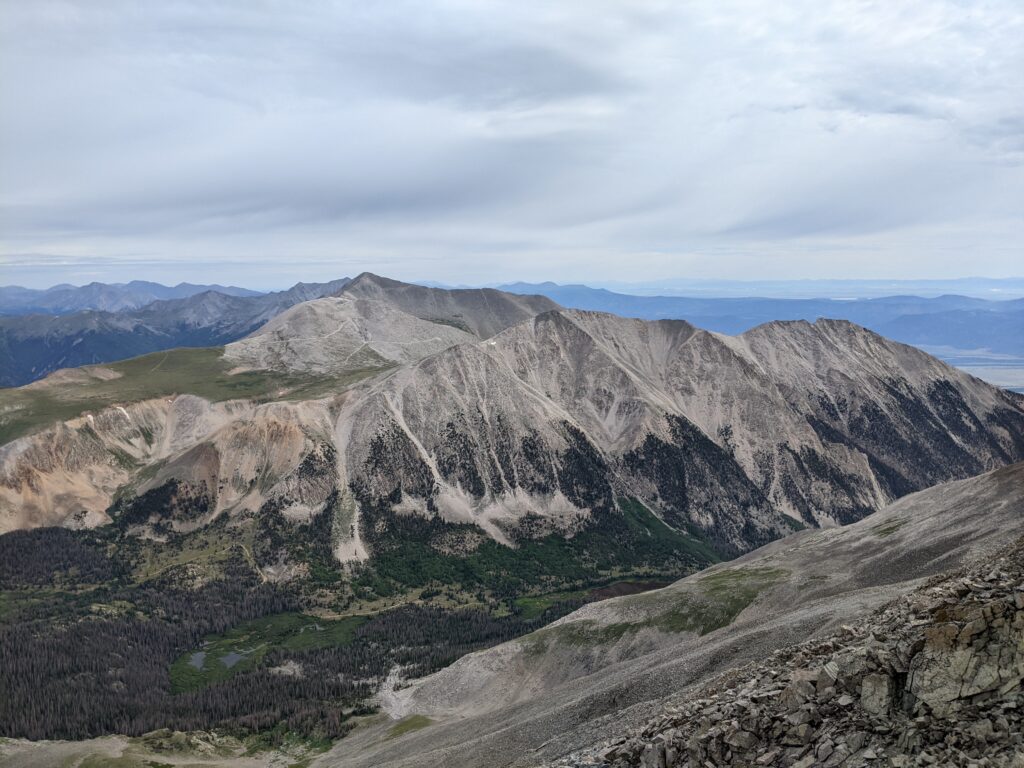Five days and 91 miles in the wilderness alone
This article has three sections: (1) hike recap, (2) summary of lessons learned, and (3) gear list.
Hike recap
In August 2021, I went into the wilderness alone for the first time and through-hiked Colorado Trail Segments 2-10, 160 miles in eight in eight days. Even though I had a great time and loved that adventure, the fast pace of 20 miles per day didn’t leave much room for variability or delay.
In 2022, for my second annual quest into the wilderness alone, I baked in some breathing room and planned for a slower pace. Instead of 2021’s pace of 20 miles per day, I aimed for an average of about 11 miles per day, which would get me from Segment 11 to the start of Segment 15 in eight days.
It was a reasonable idea, but I burned through that plan on Day 1.

Once I got on the trail, I didn’t feel like governing myself or taking it so slow. A big part of these adventures is to disconnect and find that weird, primal, runner’s-high type headspace, which is usually only achieved after some form of tortured, prolonged, challenging effort.
On the first day, I had planned to stop near Twin Lakes after only seven miles of hiking. But when I got there, I really just wanted to keep moving. The weather was great, I had a ton of daylight left, and the Twin Lakes area wasn’t all that inspiring. Plus, it was swarming with car campers.
So I changed my pacing plans and hiked all the way to the end of Segment 11, covering a total of about 16 miles on Day 1. I felt great – pushing through those extra miles, getting my backpacking legs back under me, getting out of Twin Lakes – and I could have kept going (and should have; more on that later). This helped surface the following:
First Lesson Learned: my sweet-spot pace for backpacking seems to about 20 miles per day.
I learned another big lesson on that first day of hiking. At my first stop to refill water, I grabbed my Sawyer Squeeze water filter and bladder, sat down at a creek, and proceeded to filter the creek water into my water bottles — a routine I have completed successfully many times on previous hikes. But this time, when I attempted to squeeze the (dirty) creek water from the bladder through my filter, no water came out on the other (clean) end.
Turns out that after a year of sitting idly in storage, the filter had grown dry and jammed. I made a huge mistake: I never flushed out my filter before my hike.
This made my water filter worthless, and thus no reliable source of clean water for the remainder of the day, or the remainder of my trip. I thought about my options: Pause the hike, stop in the closest town, find a supply store, and buy a new one. Keep hiking and ask people along the way to filter water for me. Call the whole thing off, go home, put on comfy sweat pants, eat ice cream alone on the couch in the dark.
None of those options sounded good (except the last one), and as I sat there feeling anxious, worthless, and pitiful – by some grace of the almighty – two mountain bikers stopped next to me at the creek to refill their water bottles. We made small talk, and I told them about the jam I was in. One of the mountain bikers kindly offered to trade filters with me. She had the exact same Sawyer Squeeze filter as mine, except hers actually worked. They were planning on stopping in Buena Vista, a nearby town, that night anyways, and she could easily pick up a new one then. I thanked her profusely, gave her $40 for the trouble, and promised to pay it forward – she really saved the day, and my trip.
Second Lesson Learned: always flush out your water filter before your trip. Also, keep water purification tabs in your first aid kit as a backup.
With that water SNAFU solved (thank you again to that trail angel mountain biker!) I hiked until about 5pm when I stopped and pitched my tent at a campground near the start of Segment 12. I should have kept going and found another campsite.
Camping at that campground was a terrible idea. Similar to the Twin Lakes situation, the campground was packed with trucks, trailers, RVs, loud diesel generators, and car-campers, many of whom were smoking, drinking, blasting music on speakers, and generally killing the vibe. The campground’s only perks were that it had a running creek nearby and a restroom outhouse – otherwise, hell on earth.
If I hadn’t been in the backpacking, disconnecting, “go into the wilderness alone” mindset, I might have warmed up to the scene. But after a long day of hiking, and more long days of hiking ahead, I really just felt like lying in my tent, enjoying the quiet of nature, and getting some sleep.
This did not happen. The diesel generators, and music, and frequent drunken outbursts from a strange neighbor, continued late into the night. When I woke up at sunrise I couldn’t get away from that place fast enough.
Third Lesson Learned: avoid car-camping campgrounds whenever possible.
On Day 2, I hiked all of Segment 12 plus a steep, brutal 1.5-mile section of Segment 13, for a total of about 20 miles. In contrast to the circus campground from the night before, I found a beautiful campsite, way back in the wilderness, for my second night. Except for a massive rabbit and some bugs, I was all alone, high up in the quiet, under the trees and stars – campsites and exhausting days like these are what it’s all about.
The next day, I cranked out another grueling and (largely) beautiful 20 miles, past Mt. Princeton, all the way to the end of Segment 13 at Chalk Creek. My pace of 20 miles per day put me way ahead of schedule. Since I was enjoying the grind and didn’t want to slow down. Rather, I planned on keeping it going and finishing the hike a couple days earlier than I had anticipated.
Before the hike I mailed myself a resupply box of food to the Mt. Princeton Hot Springs Resort, situated toward the tail end of Segment 13. Even though I had more than enough food to cover the remaining days of the hike, I stopped in and picked up the resupply anyways. I tossed out some food that wasn’t all that appetizing (e.g., greasy slices of cheese and salami) and replenished my food bag with extra packs of hydration, protein powder mixes, Clif bars, tortillas, trail mix, and almond butter.
I found another great campsite just past the Chalk Creek Trailhead, under a nice big tree that gave way to an expansive dark sky of twinkling stars. I got to the campsite late, around 8:45pm, and exhausted. I re-filled my water, had a quick bite, and passed out soon after setting up my shelter and staring up at the stars in silence for a bit.
On Day 4, after enjoying a beautiful sunrise from the quiet comfort of my sleeping bag, I packed up and hiked about 13 miles into Segment 14. Then I diverged off the Colorado Trail, to the right, for about a mile on Mt. Shavano Trail. This was a steep mile that led to yet another great campsite close to a creek, deep up in the woods (but still just alongside the trail).

I set up my shelter quickly, got to bed early, and prepped for an early and busy Day 5. My plan for the next day was to (1) summit Mt. Shavano and Tabeguache Peak – two 14ers about five miles away; (2) cruise back down to hike the remaining eight miles of Segment 14; (3) get a ride into Salida, where my car was parked; and finally (4) get a burger and a beer, and drive home happy.
Mission accomplished, but it wasn’t pretty. Well, it was pretty, but there were hiccups.
I hit the trail at 5am on Day 5 with a lighter pack of essentials for the summit hikes. I left everything else at the campsite, packed, covered and ready to be picked up on my triumphant return later in the day.
I enjoyed a beautiful sunrise along Mt. Shavano Trail. These mountainside sunrises above the tree line are what it’s really all about.

I summited Mt. Shavano at 8am, summited Tabeguache peak at 9am (located a mile passed Mt. Shavano), hiked back to Mt. Shavano by 10am, got back to my campsite at 12pm, where I packed up the rest of my gear and quickly headed back down to rejoin the Colorado Trail a mile below.
About four miles later — now back on the Colorado Trail feeling like a champ after summiting not one but two 14ers on this trek — near the Angel of Shavano Trailhead, my day got even brighter when I stumbled across more trail magic: a nice family had set up chairs and a stove to make pancakes for hikers passing through.
I took my pack off, sat down on a campaign chair, and devoured a massive pancake smothered in butter and syrup. Surprise pancakes on the trail are what it’s really really all about.
When I finished lapping up all the butter and syrup from off the paper plate and plastic cutlery, I thanked the kind folks and set off with pep in my step. What a great day. But not for much longer.
About an hour later, clouds gathered and it started raining. It didn’t stop for the rest of the day. I was finishing the remaining five miles of Segment 14 that day and didn’t feel like stopping to put on my rain gear would help much, since I was so close to the end. It got cold, windy, and stormy, and I trudged through it, soaked and miserable, for about three hours. I kept telling myself, “I’m here for the misery.” The pain and discomfort are what these adventures are truly really really all about.
By the time I got to my destination at the end of Segment 14 I was so charged up that I misread the road signage (which was clear as freaking day!) and blew right past the spot I had planned on stopping at. Instead of hitching a ride into Salida along the US Hwy-50, I kept hiking expecting another US Hwy-50 connection to magically appear along the trail. I’m an idiot.
I ended up hiking three additional miles into segment 15. I arrived at S. Fooses Creek Trailhead cold, wet, dirty, exhausted, and confused. A day hiker strolled by with her dog and I asked her for directions. She said I passed the US Hwy-50 a long time ago, and that I looked really lost. We chatted a bit, and I mentioned my plan to get a ride back into Salida to pick up my car. She offered to give me a ride – turns out she was heading back to Salida anyways. I must have looked like a miserable mess.
She dropped me off at my car, and I thanked her profusely. Yet another good deed from this trip for me to pay forward. I hopped in, found a spot at a nearby bar, inhaled a burger and a beer, and drove home happy.

Summary of lessons learned and notes for next time
- My backpacking pace sweet spot seems to be about 20 miles per day
- Flush out your water filter before the trip
- Test out all your gear before the trip
- Camp at campsites, not campgrounds, if you can
- Keep your compass in easy access pack waist-pocket
- Colorado Trail Databook is not waterproof
- Toss the inflatable pillow, just use your clothes bag instead
- New drybag packing system: Sleeping bag in 6L dry bag; Clothes in 12L dry bag; Daily food in 1L dry bag; Incidentals in 1L dry bag; Toiletries in small orange Eagle Creek bag
- Add to packing list: Emergency bivy; Water purification tabs in first aid kit
- No more cheese (too greasy after a few days on the trail)
- No more breakfast protein shakes (it’s just too much, and it usually tastes nasty)
- Get a tent; the shelter and bivy system I’ve used or the past couple years gets the job done, but sometimes it kinda sucks being attacked by bugs all night.
Gear list
- Backpack: Hyperlite Southwest 2400
- Sleeping bag
- Insulating sleeping pad
- Nalgene bottle
- Sports drink bottle
- Hiking pants
- Warm beanie
- Quick-dry towel
- Floss
- Toothbrush
- Inji wool socks
- Spare wool socks
- Altra trail running shoes
- Hat for sun protection
- Buff for additional sun protection
- OR Helium Bivy
- Trekking poles
- Headlamp with spare batteries
- Wool layers
- Patagonia Light Shell
- Patagonia Down Puffer Jacket
- North Face Rain Shell
- Gloves (light)
- Water filtration system (Sawyer Squeeze and CNOC 2L bladder)
- Nutrition and Hydration bag (pack in Ursak bag)
- Sun screen
- Sunglasses
- First Aid Kit
- Map and compass
- Personal locator beacon
- Ursak bag
- Odor bag liners
- Carabiner
- Knife or multitool
- Poop shovel
- Toilet paper
- Trash bag
